Author and Photography: Roland Brown
Triumph Motorcycles is currently thriving and growing, having more than doubled its production in the last five years to build more than 130,000 bikes in 2024. The situation was very different half a century ago, when Triumph was part of a British motorcycle industry in deep trouble.
In 1974, Triumph’s parent company Norton Villiers Triumph, which also owned BSA and Norton, had lost millions of pounds. Prospects were bleak, and the workers at Triumph’s factory in Meriden, near Coventry, had begun a sit-in to protest about threatened mass job cuts.
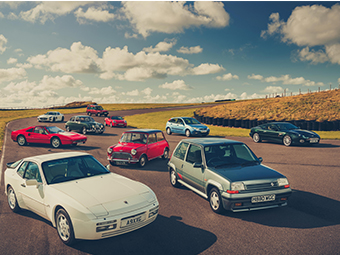
But the following year brought a positive development: the launch of the T160 Trident. Stylish and quick, the 740cc triple (its T160 designation was a factory code number, in Triumph tradition) belatedly dragged Triumph into the modern era.
Produced at the old BSA factory at Small Heath in Birmingham, the T160 was heavily based on the T150 Trident. Triumph’s original three-cylinder roadster had not been a sales success following its introduction in 1969. Its replacement incorporated more than 200 mechanical modifications.
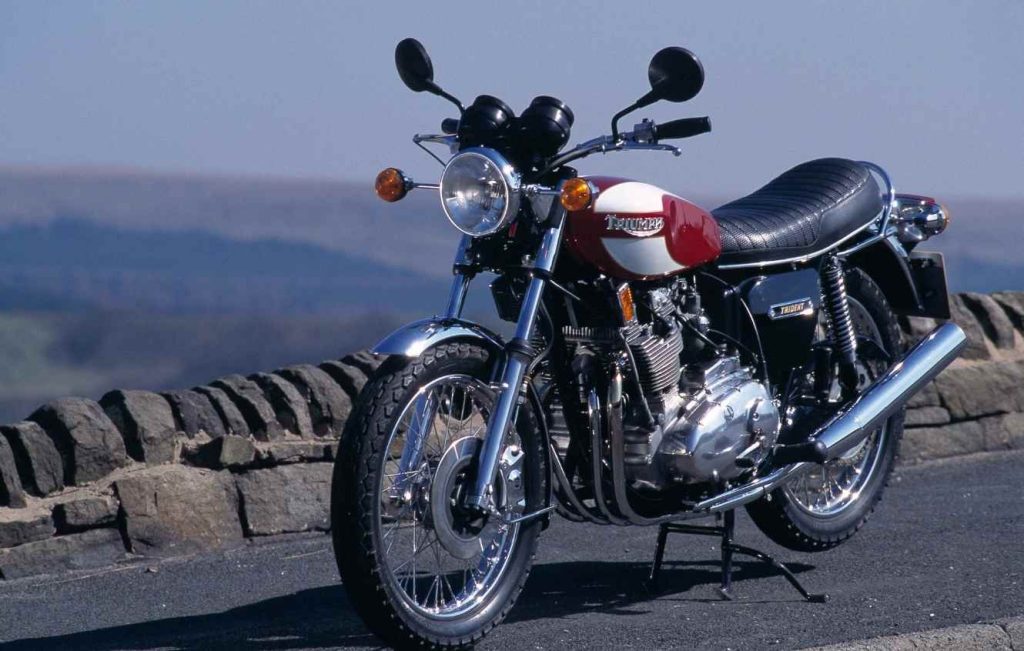
Fresh styling was arguably the T160’s most important feature; the T150’s angular look had been widely disliked. The new model’s wide, rounded 22-litre petrol tank was attractively finished in red with white flashes, or white with yellow on the slightly smaller export version.
Below it, the aircooled engine was angled slightly forward in the frame, as it had been in BSA’s Rocket 3, rather than vertical as with the T150. A chromed front mudguard plus new sidepanels, seat and exhaust system helped give the T160 a much more modern appearance.
The pushrod-operated ohv engine’s most significant change was the addition of an electric starter, one of the features that had helped the CB750 outsell the T150 by a huge margin following their near-simultaneous arrivals six years earlier. Other updates included a left-foot change for the gearbox, which had belatedly been uprated from four to five speeds in 1973.
Other engine mods included higher compression ratio and some alterations to the car-style single-plate clutch. Maximum output was an unchanged 58bhp at 7250rpm; a healthy figure at the time although down on the CB750’s claimed 67bhp, let alone the 82bhp of Kawasaki’s mighty 903cc Z1.

Triumph’s new tubular steel frame owed much to racing experience, notably with “Slippery Sam”, the factory’s successful Trident-based production and endurance machine. The engine sat higher and further forward than the T150’s, the lower frame tubes were raised for improved ground clearance, the front forks were slightly shorter and the swing-arm longer.
It added up to a model that was much closer to what British bike enthusiasts had been hoping for ever since rumours of a 750cc-class triple had emerged in the mid-Sixties, during the Trident’s long development. The T160 looked to have the style, speed and specification to compete with Japanese models, and soon generated enthusiastic reviews in the press.
“If the Trident had been like this seven years ago there wouldn’t be half as many Honda fours on the road now,” wrote Bike magazine’s tester. “At last it can stand up for itself among the ranks of the world’s best and most exciting heavy road-burners, without looking inadequate or inferior.
“For me, riding the Trident was something of a re-discovery of the joys of British biking, and a glad realisation that the sickly remnants of the country’s industry is capable of presenting its products with the sort of style and finesse today’s discerning market demands.

“It’s comfortable and practical for long distance touring, or wriggling through metropolitan traffic. Handling has a lot to do with characteristic British feel. It’s not as taut and responsive as some Italian machinery, but it gives a feeling of security and supreme confidence I’ve never experienced on any Japanese heavyweight.”
As a moped-riding teenager in the mid-Seventies, the closest I got to riding a T160 Trident was its image printed on the front of my favourite sweatshirt. Decades later, it was a thrill to climb aboard this test bike, which was in immaculate condition after a recent restoration.
My first impression was that the Trident felt low but heavy. At 228kg dry it weighed 18kg more than the T150, and much of that weight was carried high. The riding position was typical of a European bike of the Seventies, pulling me forward to the narrow, slightly raised bars with their squidgy Triumph grips.
Given that the electric starter was a key T160 feature, it was ironic that due to this bike having been fitted with a smaller battery I was advised to use the kick-starter. Having “tickled” the outer two Amal carburettors to get the fuel flowing, I gave a gentle dab on the lever to send the triple burbling into life with a muted but burbling three-cylinder sound from its pipes.
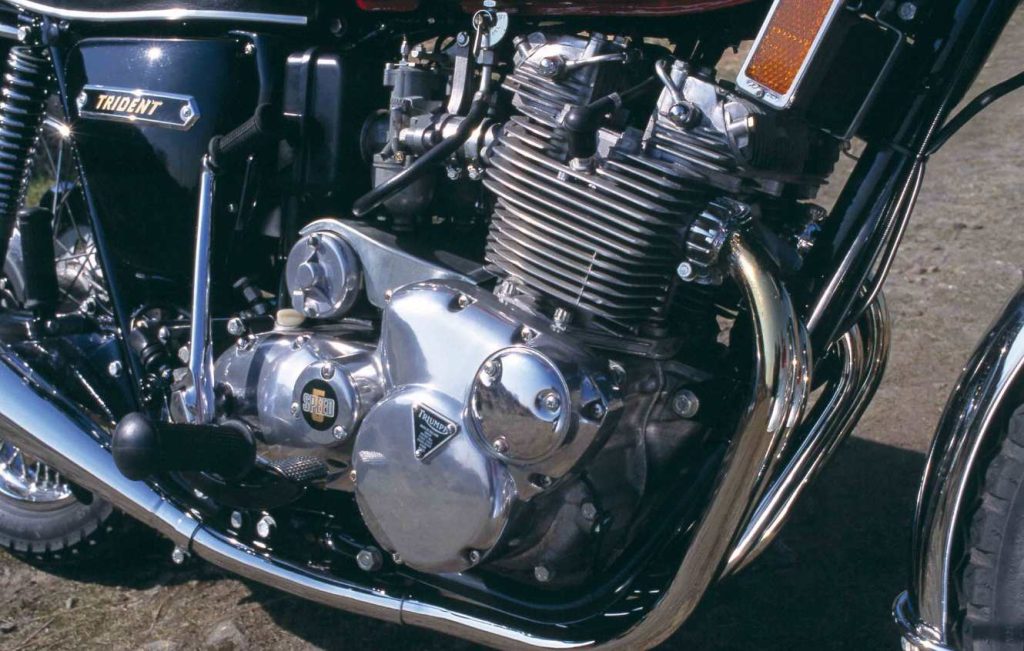
Unlike some bikes, the Trident didn’t seem to shed much weight once under way, so felt ponderous at slow speed. In town it was well-balanced, its supple suspension and snatch-free transmission allowing easy manoeuvring through traffic. But on twisty country roads the combination of narrow handlebars and high centre of gravity demanded plenty of effort to change direction, and didn’t encourage enthusiastic cornering.
Provided it was given a firm hand at the bars, though, the Trident obeyed instructions – and the same was even more true at the higher speeds to which the triple was better-suited. Suspension was excellent given its age, soaking up most bumps and allowing the Triumph to sweep serenely through main-road curves that would have sent some contemporary rivals into a wobble.
The other chassis parts played their parts well, too. The 18-inch Dunlop tyres showed their age by having identically narrow widths, but gripped sufficiently well to make use of the Trident’s improved ground clearance. And although the single front brake disc was fairly small, a firm squeeze of the lever slowed the bike efficiently, aided by the similar rear disc.
If the T160’s high-speed handling was impressive, it was the three-cylinder engine that gave the Trident its soul. The triple motor couldn’t match the relaxed low-rev feel of Triumph’s parallel twins, but ran happily and reasonably smoothly from as low as 2000rpm.
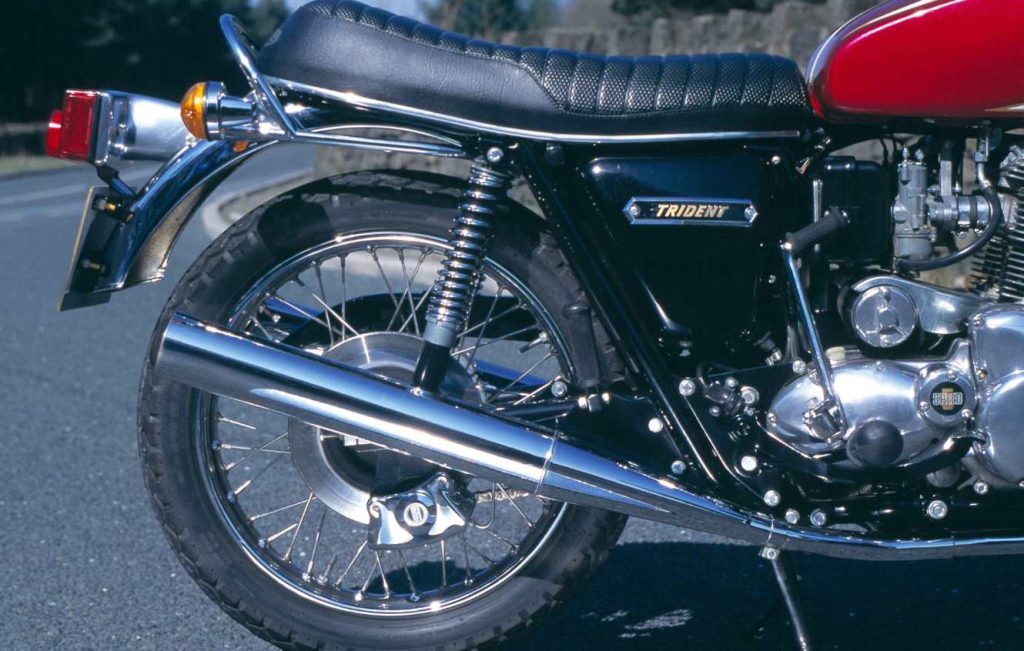
The triple would pull crisply, if not particularly urgently, from below 30mph in top gear, but responded much more enthusiastically when I kept the tacho needle near the 8000rpm limit. The 120-degree engine was not completely smooth, buzzing enough to tingle my feet through the pegs. But the Trident had a lovely, rev-happy feel that encouraged me to keep it spinning.
And when ridden like that, the Trident was a thrilling bike to ride, providing top-end acceleration that matched almost every bike on the road in 1975. After a pleasant afternoon spent riding around in the sunshine, I realised that I was already slightly late taking it back to its owner – the perfect excuse for a last, fast ride. This was the final opportunity for the Triumph to show its quality, and it rose to the occasion.
With the throttle wound back the Trident pulled hard, its engine feeling stronger and stronger as the revs rose. Reports that a hard-ridden T160 would still pull strongly at an indicated “ton”, its rev-counter indicating 6000rpm, seemed easy to believe as I crouched over the broad petrol tank with the throttle held open…
When I slowed for a series of curves the Triumph remained stable, banking to left and right with confidence-inspiring solidity. On the following straight it cruised with ease, its exhaust note lost to the wind, plenty of power in hand, and the narrow, almost flat handlebars giving a comfortable riding position.
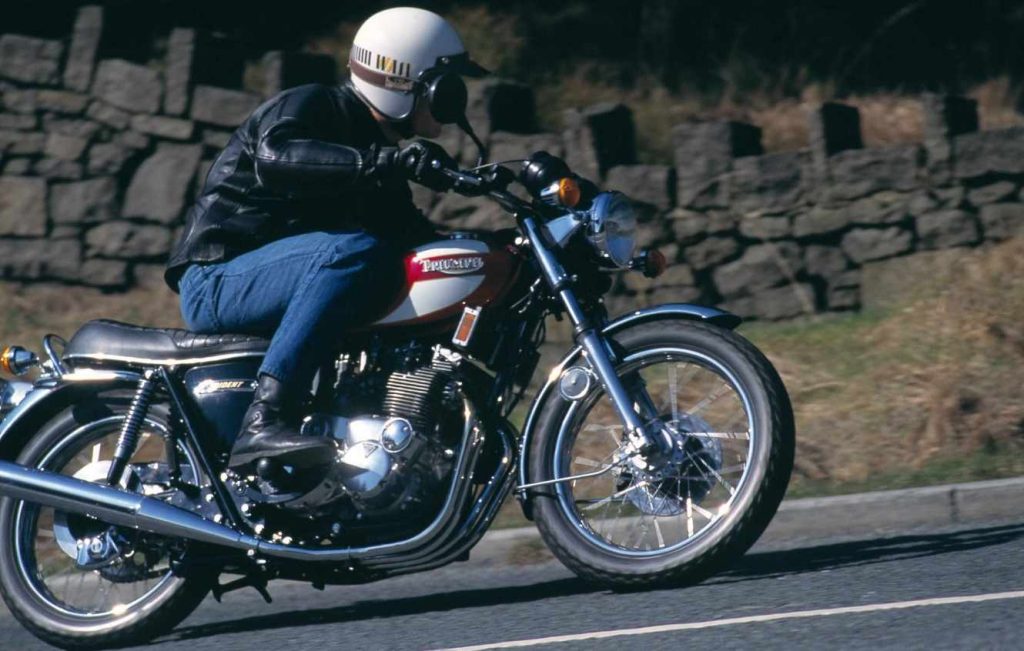
I was impressed by the Trident’s performance, although I didn’t reach the 126mph top speed that Bike magazine’s tester recorded, with his bike’s rev-counter needle buried in the red in top gear. “I could hardly believe it when I went back to look at the speed on the clock after my first run through the trap,” he wrote.
But the Trident was not as competitive as it seemed. Several years later it was discovered that the test-bike’s motor had been stripped and blueprinted by Triumph’s experimental department, in a desperate attempt to keep up with the Japanese opposition.
Such tactics were not enough to make the Trident a big success, partly due to Triumph’s mounting financial problems, which affected quality control, resulting in some unreliability. The T160’s price was high, too: at £1215 in 1975, it was over £200 more expensive than Honda’s CB750.
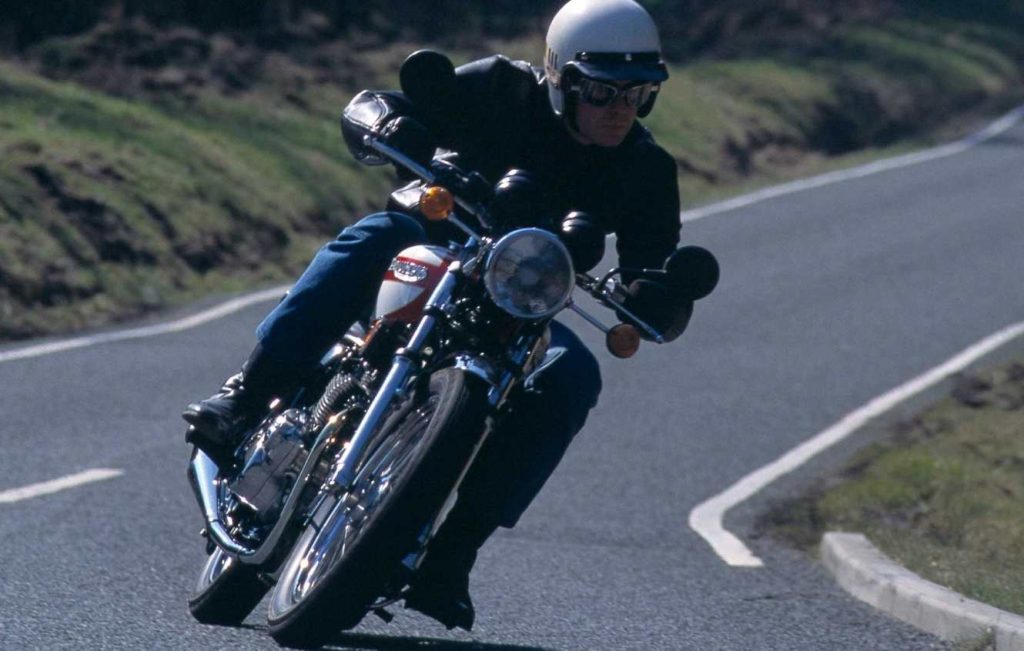
Despite that, about 7000 were built and sold in 1975. But by the end of the year NVT was in receivership, and the Small Heath factory was set for closure. The only Triumphs in production were Bonneville twins being assembled by a Meriden factory workers’ co-operative. That struggled on for a few more years before finally closing, but Triumph’s last real hope had disappeared when the Trident was abandoned.
That, of course, was not the end of Triumph’s story. In 1983 the marque was bought from the liquidator by builder John Bloor, who built a state-of-the-art factory in Hinckley and developed a new range of liquid-cooled models with three and four cylinders.
When Triumph was reborn in 1991, it was fitting that its near-identical 900 and 750cc three-cylinder roadsters were named Trident, after the old firm’s only true superbike.
What bike would you like Roland to write about next? Let us know in the comments below.

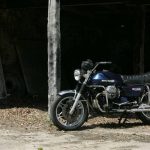


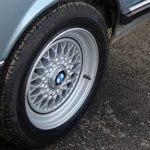
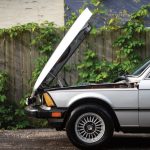



Could you do a review of the T140 series of the triumph Bonneville twins.
Whoever said the T160 could have interrupted the CB750 if made sooner was kidding himself. 3 cylinder engines were the known preserve of crummy little DKW cars and 2-stroke Saabs, and the British Mini Minor and Morris Minor beat both with 4. Triumph couldn’t have made the necessary numbers, anyway.
The worst thing about a Trident is the clutch – you need the grip of Schwarzenegger!